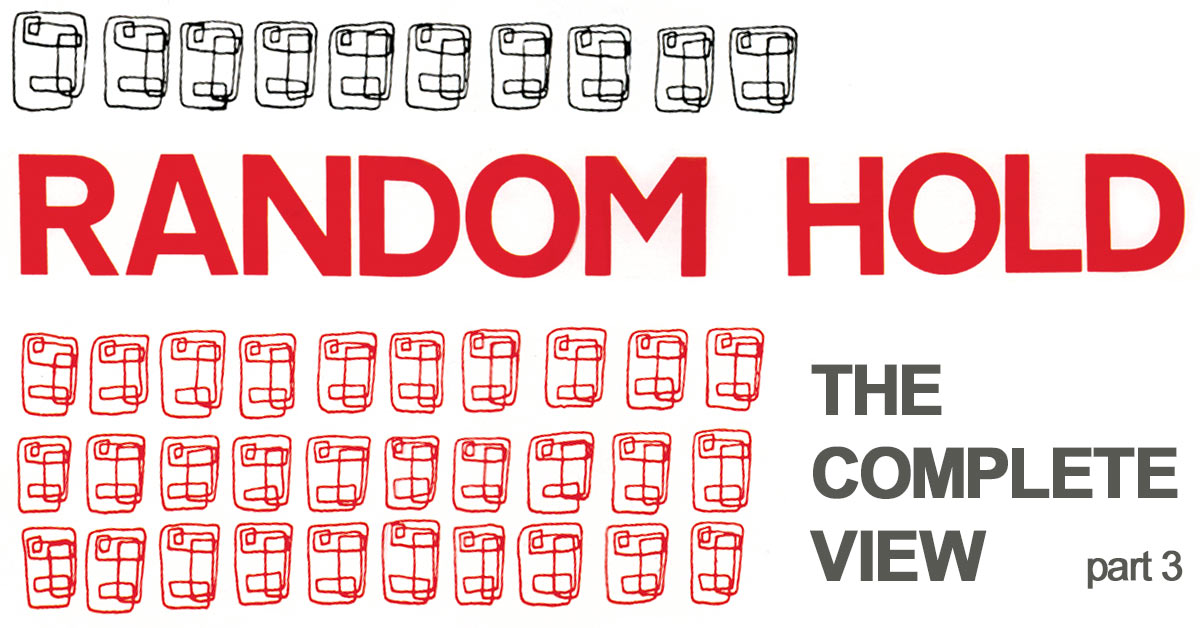- Article
- Read in 30 minutes
Random Hold (3) – A VIEW AHEAD: David Ferguson sticks with it (1980-1984)
Random Hold Special (III): Die post-Rhodes era of the band (1980-1984)
Previously on Random Hold:
Random Hold’s first releases in the UK (a single, EP and an LP) do not do as well as they hoped for, but at least the band can convince people live. Nevertheless, Polydor releases them from their contract. Thanks to a new US record deal and a record released there, a North American tour as support band for Peter Gabriel can take place. At the end of the tour, David Rhodes and David Ferguson kick Bill MacCormick out, who promptly takes back the money he invested. As the band is now broke, it disbands. Random Hold’s promising entry into the music business has ended in controversy and without the anticipated success.
1981
(Please note: The chronology of things from 1981 onwards is not always clear because occasionally it has not been possible to establish the correct month.)
After a brief engagement on the 1981 tour by Japan (as the second guitarist), David Rhodes became Peter Gabriel’s regular guitar player from spring ’81 onwards.
The recording sessions for Gabriel’s fourth album began at this point and ultimately lasted into the summer of 1982. Rhodes, who had previously been unemployed and depressed, took part and from then on also played live in Gabriel’s band. John Ellis, whom he replaced there, joined Peter Hammills’ K-Group.
Rhodes had (co-)composed 26 songs for Random Hold, as far as is known, nine of them all by himself. The time with the band, however, seemed to have no meaning for him later on, and was almost unpleasant for him.
In Gabriel’s band, Rhodes was only active as a songwriter on Across The River (1982) and provider of lyrics for That Voice Again in all these years. For Gabriel’s soundtrack Long Walk Home he was mentioned as an arranger.
In addition, he occasionally collaborated (sometimes as a composer) with other artists, both live and in the studio. In 2009 and 2013 he released two albums as a solo artist. (See also the GNC overview article on David Rhodes).
Meanwhile, David Ferguson had managed to get the indie record company Upper Class Records to release the recordings of Random Hold from the summer of 1979 in their entirety as a double album. Commercially, however, this did not do anything.
Early 1981
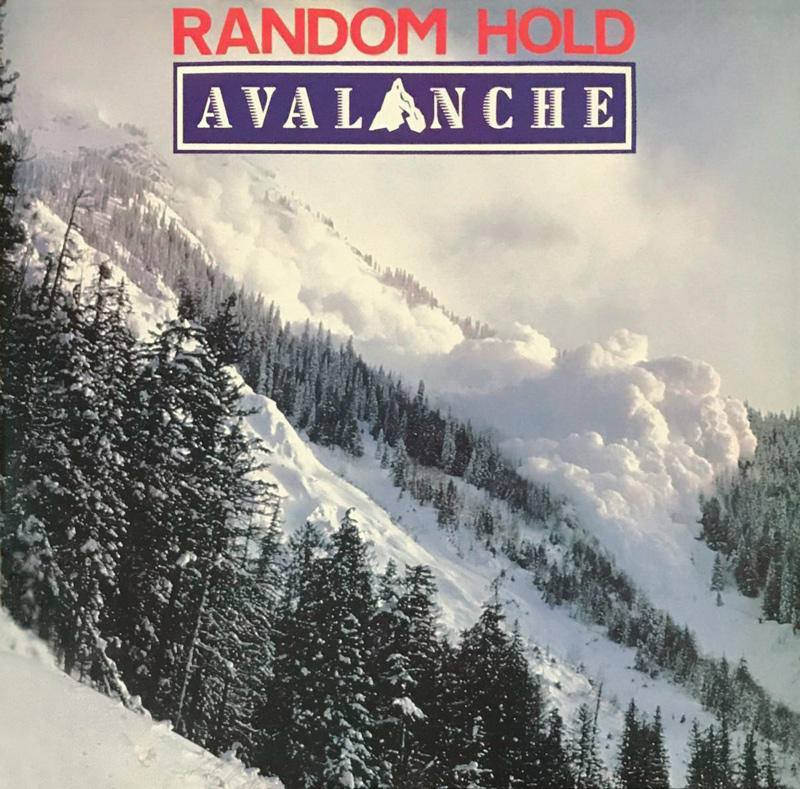
2LP (UK) Avalanche
A: Meat, Second Nature, The Ballad, Precarious Timbers, Central Reservation
B: Avalanche, Cause And Effect, Dolphin Logic, Silver Spoons/Golden Tongues, Fear (Eats The Soul)
C: Etceteraville, With People Out Of Love, Film Music, Montgomery Clift
D: Tunnel Vision, What Happened, The View From Here
The songs were later re-released in this order on The View From Here double CD. Those 17 songs include both the 5-song EP and the 8-song LP from GB as well as two single B-sides, the one song only available on Etceteraville (Second Nature) and another track that had not been pressed on vinyl before: Tunnel Vision.
With a playing time of over eight minutes, the song is the longest piece from the Hammill recording sessions. Compared to the length, however, relatively little happens in this song. It has characteristic keyboard sounds and therefore belongs to the category “sounds a bit like 801”.
At the beginning of 1981 (maybe already at the end of ’80) Ferguson recorded new demos with Pete Phipps. In an interview, Ferguson said he had worked with Peter Hammill in his home studio during this time on three demo songs: Walking On The Edge, Shining Smile and Lying On The Floor.
In addition to the Random Hold collection, Upper Class Records now released David Ferguson’s first solo single.
Spring 81
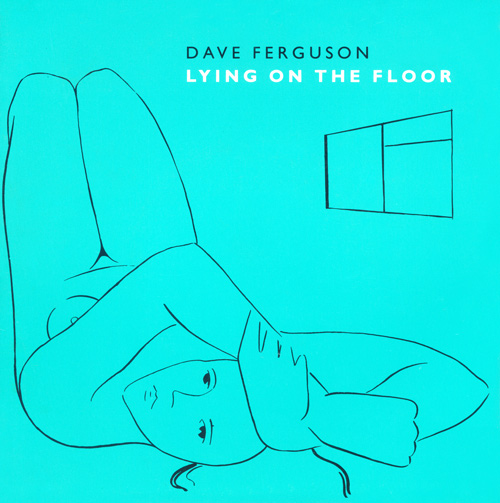
7″ (UK) Dave Ferguson
A: Lying On The Floor / B: Let’s Give That A Listen
Both songs sound more like demos and since the B-side was composed together with Phipps, it can be assumed that we are actually dealing with two demo songs by the two of them. If Peter Hammill was involved, his work was unacknowledged.
Lying On The Floor scores with massive drums and a clear lead guitar (who played it? … Hammill?). There are also plenty of keyboards or synths. The vocals on this recording and also the percussion part at the end of the track are not convincing. You could say this continues the path begun with the last Random Hold demos: the dense atmosphere and gloom are displaced by a higher level of catchiness and a mix typical of the more popular New Wave.
The B-side, on the other hand, is a more moving and less brute song, compatible with their older material. Interesting guitars counterbalance the sadly unaccomplished vocals here.
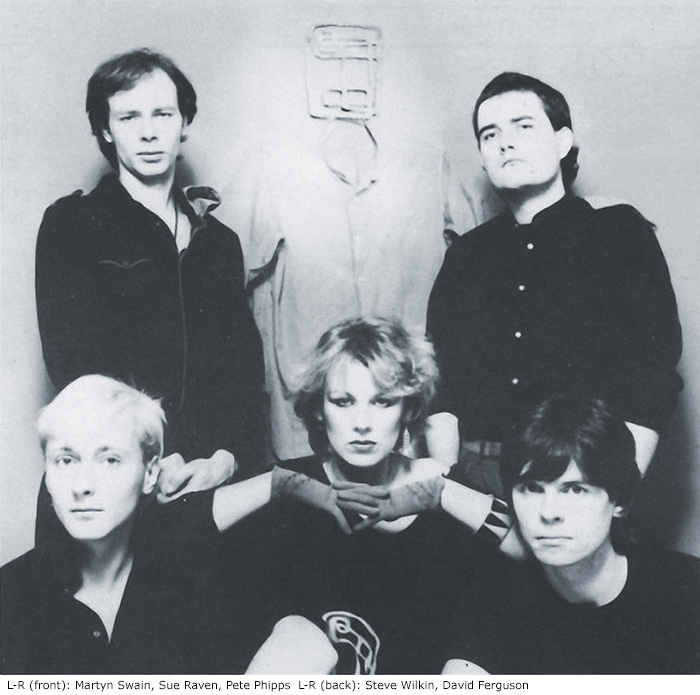
Tony Smith and Gail Colson saw potential in Phipps and Ferguson’s demos and encouraged them to continue with Random Hold. Various candidates were invited to audition, and it seems that first Nigel Hardy and then Andy Prince (who had played for Rikki Sylvan (see below)) were, briefly, the band’s bassists. Eventually a stable line-up emerged with Steve Wilkin (guitar; ex-Neo, ex-3am), Martyn Swain (bass) and Sue Raven (vocals).
Hit and Run and Gailforce landed a record deal with RCA and quickly the band went into the studio and released two singles in the course of the year.
June 1981
7″ (UK) – A: Walking On The Edge / B: Shining Smile
For this single, too, one song was written by Ferguson alone, the other together with Phipps. Ferguson produced the single himself.
The A-side is the more commercial song and offers polished New Wave with a pinch of funk. Sue Raven’s vocals are much better than the attempts on Ferguson’s solo single, but she doesn’t convey too much charisma.
Shining Smile is a bit more melancholic and with guitars that can’t be heard very much but create great background effects – similar to what we knew from David Rhodes. The drums are aggressive – suddenly Raven almost sounds like Siouxsie Sioux (Siouxsie & The Banshees). So here, too, the flipside of the single has the more interesting song.
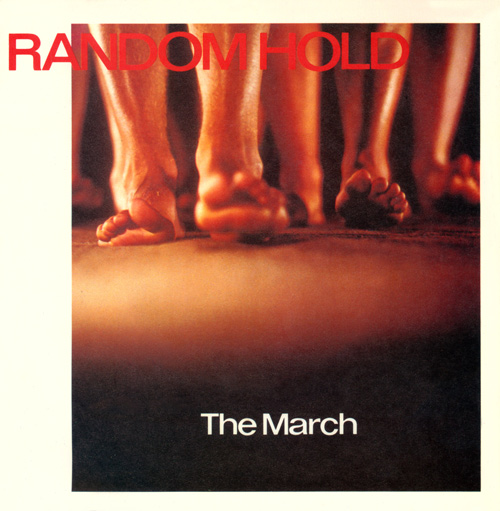
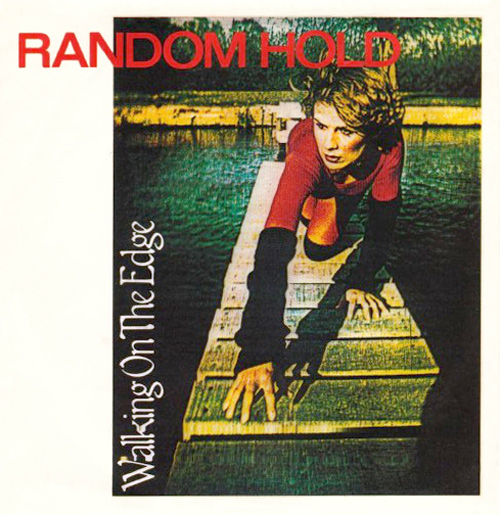
September 81
7″ (UK) – A: The March / B: Dance Feeling
David Ferguson produced the single again, and this time both tracks were written with Phipps.
The March has a catchy chorus and simple guitars accompanied by art-rock-ish keyboards and bass lines. Even though this is trimmed towards the new wave style of successful contemporary bands, the piece is rather boring and can’t match their atmosphere or their glamour.
The B-side is an atmospheric piece of pop that tends to tie in with the first LP. Raven alternates impressively between chanting and howling.
Random Hold toured briefly in August 1981 and again in November and December, then opening for OMD (Orchestral Manoeuvres in the Dark). OMD had the gig on December 4, 1981 filmed for a video and Random Hold were lucky enough to have their performance recorded as well. It can be found as a video on the 2-CD Differing Views.
At this concert they played a set consisting of Cityclean / In The Centre / Burn The Buildings / Walking On The Edge / Dance Feeling / What Happened / The March.
We see and hear a well-rehearsed band that acts professionally and whose central focus is the theatrical singer, who also reminds me a little of Toyah here.
The first half of the gig is taken up with previously unreleased songs that have a darker bass sound than those of the second half and are therefore also reminiscent of the earlier Random Hold phase. The slightly poppier songs from Walking On The Edgeon sound rather better than on vinyl, with the exception of What Happened where the vocals in particular don’t really fit the song.
Guitarist Wilkin leaves his mark on all the songs and the audience applauds generously. All in all, a convincing performance.
1982
During the winter of 1981/2, the band recorded their album Burn The Buildings.
The LP was produced by Ferguson and Rikki Sylvan, who also played synthesizer and had drawn musical attention to himself in 1976-78 with a punk/new wave band called Rikki and the Last Days of Earth. After that he had worked with Steve Wilkin in Neo, recorded a solo album and mixed some New Romantic records.
David Rhodes was not involved in Burn The Buildings, though an entry on his own website says otherwise.
The LP’s advance single contained a song that was already half a year old:
January 1982
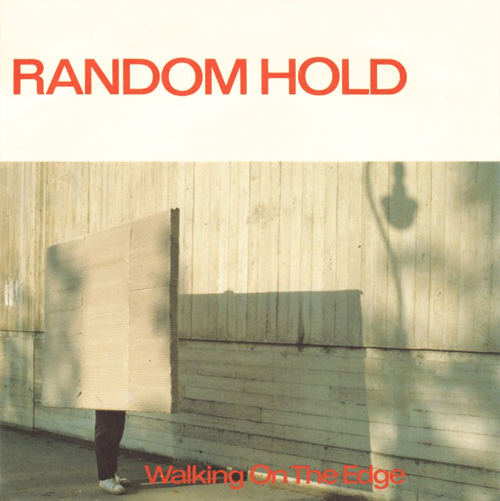
7″ (UK) – A: Walking On The Edge / B: Camouflage
Walking On The Edge was re-released with a new, somewhat more artistic cover (and without an image of the singer Sue Raven). The flipside was replaced by another one, which is somewhat surprising. The few buyers of the original single could hardly have been the reason. But the sources do not give any explanation.
The B-side is a song composed by Ferguson and David Rhodes, which had already been part of the last Random Hold demo with Rhodes in June 1980. This new recording has a very long intro, then builds on the trademarks of the instruments (concise bass, atmospheric guitar licks) and shifts the vocals a bit more into the background. In addition, Sue Raven sounds more ingratiating here compared to the clinical, somewhat evil male vocals before. It can be said that the song has been upgraded somewhat and definitely challenges the A-side.
February 1982
LP (UK) Burn The Buildings
A: Cityclean, Toys, Walking On The Edge, Dance Feeling, Palmreader, The March (live)
B: Missing The Boat , Future Kids, Is There Light, In The Centre, We Can Work It Out, Burn The Buildings
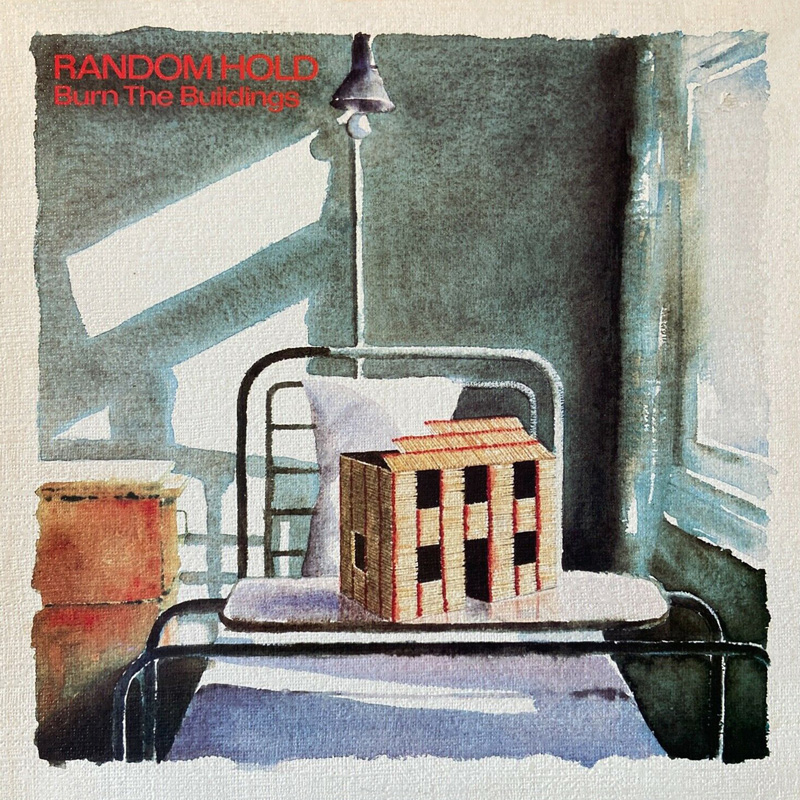
The cover of this record was drawn by Graham Dean and even if it is not an immediate eye-catcher, it is still an artistically successful picture showing a model house built from matches on a hospital bed.
The songs on the record add up to just under 44 minutes playing time. Two of them – Walking On The Edge and Dance Feeling – had been previously released. However, Dance Feeling was re-recorded and the individual instruments were arranged and weighted slightly differently. The song has become more theatrical and the modern pop/wave elements have also been strengthened. A funky touch makes it more suitable for disco. It fits well into the LP, though it lacks the links to The View From Here that were present before.
The March had also been released, but in a studio version. The live version on this album comes from the aforementioned gig with OMD. There was, apparently, also a high-quality sound recording from it, which was not used in the video (of the 2-CD Differing Views), though. The live version does not fit quite seamlessly into the album, as it clearly has a live sound as opposed to the other recordings. On the other hand, the dynamics are greater here and Sue Raven also puts more emotion to her singing.
Palmreader sounds like Ferguson’s first foray into film music, complete with strings and no vocals. One wonders why this short piece was not used as the intro of the whole record. Furthermore, it is noticeable that the song was written with Bill MacCormick. Ferguson later said that when they met Peter Hammill in the summer of ’79, they used some chord progressions from which both Palmreader and Hammill’s song In Slow Time (from the album A Black Box, 1980) emerged. The resulting similarity of the pieces is quite recognisable, though the songs are very different, too.
Toys, on the other hand, is the only one attributed to Ferguson alone. A lot of rhythm and keyboards in the foreground make the song a typical New Wave song for the time. As such, it works well.
Future Kids is an exception in that guitarist Wilkin gets half the songwriting credits. Nevertheless, the guitars do not stand out here but rather the bass line and the numerous sound effects. It differs from many other songs on the record in its relatively slow tempo; you can hardly dance to it. There is a sterile atmosphere to the song.
A Beatles cover is unexpected as the penultimate song of the disc. Certainly not what you would expect from a hip New Wave band. Even though it is dominated by keyboards and seems quite synthetic, turning a pop number into a modern sound spectacle. Nevertheless, it is the least impressive track on Burn The Buildings.
All the remaining tracks have an interesting arrangement, are well produced, atmospheric and with good vocals. They fit the times and create a niche for themselves between Siouxsie and the Banshees and Duran Duran. A commercial yet interesting collection of songs. Only a few trademarks of the previous LP are still audible. Even if the music hasn’t changed drastically, it’s rather the arrangement that is different here.
If you look at what else RCA was releasing at the time, you’ll notice the countless dance floor hits that clearly dominated the output. Presumably, the record company envisioned such hits for Random Hold as well. However, neither the album nor the singles racked up significant sales. This is surprising, because the sound fit perfectly into the time and Sue Raven was an expressive singer and front woman.
David Ferguson later said that he was not satisfied with the realisation of the songs on the LP and that Phipps and he should have taken more time with personnel decisions. He also said that producer Sylvan had been “pushed upon“ them.
Shortly after the release, changes in the RCA management were taking place, and Random Hold quickly got less popular with the decision-makers.
In March 82 Random Hold played a few concerts to promote the LP. RCA then urged Ferguson to fire everybody in the band except for singer Raven.
Pete Phipps had co-written five songs with Ferguson during his time in Random Hold. He had also been involved in four group compositions. Later that year he played on Mike Rutherford’s second solo album Acting Very Strange. He subsequently handled the drums on two XTC records, worked for The Eurythmics, Culture Club, Roger Chapman and later a reformed Glitter Band, among others.
RCA now required Ferguson to record a cover version of the soul hit Dancing In The Street (1964, Martha and the Vandellas; frequently covered). In the CD booklet of Differing Views, Ferguson later claimed that the single was released at the same time as David Bowie and Mick Jagger’s version. The latter was released in August 1985. However, both the catalogue number and the imprint on the single suggest that Ferguson was mistaken. It is much more likely that the single was released at the same time as Van Halen’s version, in May ’82.
May oder June 1982
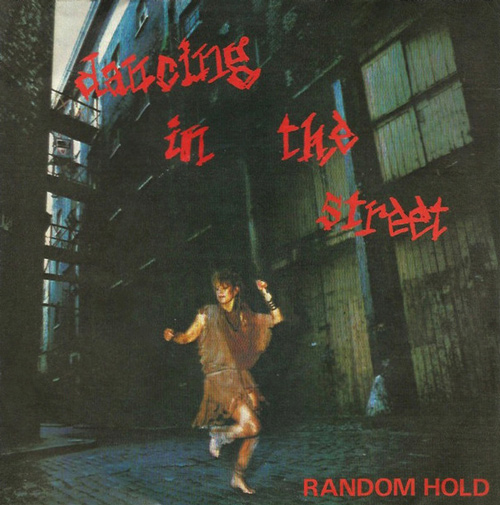
7″/12″ (UK) – A: Dancing In The Street(s) / B: Lying On The Floor
David Rhodes appeared here as the “arranger” of the A-side, though he did not play. The instruments were handled by friends and session musicians, none of whom had any further part in the story of Random Hold before or after. The single was produced by Ferguson himself.
Although the cover version manages to copy the style of the original to some extent, it only sounds like an inferior copy. You can hear nothing of the New Wave that was on the LP the band had just released. Incidentally, the recording doesn’t even sound particularly good. One really wonders what goals RCA might have pursued with this action.
The flipside is a new version of the song Lying On The Floor that David Ferguson had already released as a solo artist the year before. Is it wry humour to choose such a title as the B-side of Dancing In The Street? Or even a prophetic glimpse into the band’s future?
Unlike the A-side and the solo version, Lying On The Floor was well recorded in terms of quality. The song fits the sound of the LP and gains in drama. In fact, it sounds as if the very band that recorded Burn The Buildings played this song as opposed to just a bunch of session guys. Maybe the song was held back as a B-side, because in comparison the album songs are a bit stronger.
The (very original) Van Halen version of the classic was moderately successful in the US, but Random Hold’s recording was unsuccessful in the UK. The band and record company parted ways.
Hit and Run and Gailforce nevertheless kept trying to get Random Hold’s music out to the public. An opportunity arose when singer Denise Visconte, who was signed to PRT (Precision Records and Tapes; formerly Pye Records), was looking for songs and musicians. Two little-known older compositions were picked out and recorded by an, except for Martyn Swain, re-formed band. For these sessions David Rhodes returned as guitarist and Vic Martin as keyboarder (he had also helped out on the last demos with David Rhodes in 1980). Ferguson is not listed as a musician, only as a producer. Other musicians involved were Steve Creese (drums; later Jah Wobble and The Lotus Eaters), Duncan Kilburn (saxophone; ex-Psychedelic Furs) and Peter Hammill (guitar). Denise Visconte used her stage name Georgia II.
September(?) 1982
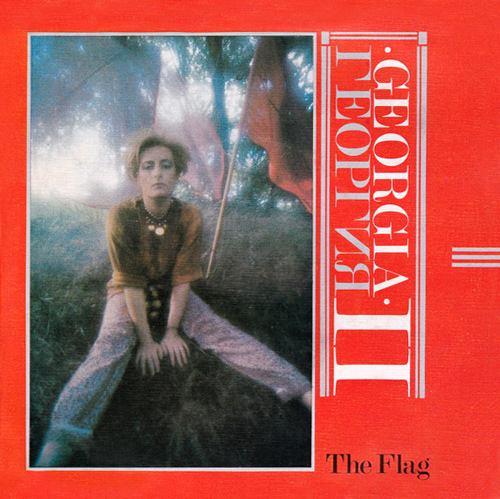
7″/12″ (UK, Portugal) Georgia II
A: The Flag / B: Tunnel Vision
Interestingly, the singer’s name is also written in Russian on the cover of the single, translated as “Georgy II”. The question is what this means, especially since the song was not released in Russia and Denise Visconte, based on her name alone, very likely does not have any family ties there.
The Random Hold song The Flag (until then recorded only as a demo, see previous section) retains its basic arrangement as a funky pop song in the Georgia II version. However, the weight of the instruments has clearly shifted in the mix from rhythmic drums and offbeat guitar to keyboards and a playful bass. This makes the song appear more optimistic, though it still doesn’t hide a certain lack of ideas.
On the B-side, which Random Hold only released on the Avalanche 2 LP, the intro and outro have been shortened. The bass is a bit funkier, the rest of the arrangement is left almost unchanged. The eerie, oppressive middle section is still there. In the end we cannot make out what hopes Precision (PRT) may have had for this single.
If you check out the numerous other singles released by PRT at that time you see that their motto was: old and new spread as widely as possible, often more of the second or third rank, in the hope of having a hit.
Ferguson hints in one of his booklet texts that Georgia II covered even more Random Hold songs, which would be tantamount to saying that she also performed live. Whether this was true, and who, if any, the musicians had been, is not known.
In the meantime Sue Raven had left Random Hold. Since David Ferguson still owed his publisher Hit and Run four songs, he quickly recorded a demo at the end of 1982 with Jonathan Hughston (ex-Paint) as singer. However, he himself had the feeling that Random Hold had run its course.
Three of the four songs of this demo were released on the 2-CD Differing Views. These are Painting Over Cracks, All Sit Downand Second Cross.
All the songs are very heavy on keyboards, but that’s precisely why the first two sound like flawless hit parade pop from that era. The vocals are good and the songs have drive, funky bass beats and are catchy.
Second Cross is different in that it generates a mystical atmosphere and for that reason is reminiscent of old Random Hold. This song would not be suitable as a single, but is nevertheless well arranged.
It’s hard to believe that the demos were written and recorded without any expextations and under time pressure. The recording quality is also better than on older Random Hold demos and David Ferguson’s solo single. In principle, all three pieces could have been released as they were.
Unexpectedly, Tony Smith liked the demo very much and managed to arrange a new record deal for the USA. The label was Duke Records, run by the three members of Genesis between 1981 and 1984 and distributed by Atlantic Records.
1983
In March 83, recording sessions for the new album began. Since Ferguson felt Random Hold’s time had run out and the band was even less well known in the US than in the UK, a new name was invented for this project: Nine Ways To Win. As before, this expression came from a slot machine.
Ferguson himself produced the recordings, and David Lord (Peter Gabriel) was the engineer. For musicians, Ferguson had called together both old acquaintances and new faces alongside singer Hughston: Martyn Swain played bass again, David Rhodes played guitar on some pieces, Steve Creese dealt with the drums, Georgia II provided backing vocals. They were supported by several saxophone players, a trumpet player, a violinist and Steve Lovell as additional guitarist. Lovell had already played with some short-lived New Wave bands and had worked occasionally as a session man.
Right at the beginning of the sessions, PRT demanded another Georgia II single. This time the A-side was to be a cover version and an older Random Hold pieces was to be used as the flipside only. Accordingly, the musicians on this single were partly those who worked in Nine Ways To Win. The single sleeve lists Martyn Swain*, Steve Creese*, Steve Lovell, saxophonist Pete Thomas and Vic Martin as the keyboarder.
However, according to the booklet of View With Suspicion, other musicians were involved: David Rhodes (guitar), Peter Hammill (guitar), David Ferguson (keyboards) as well as those marked “*”. It remains unclear whether the credits on the single were wrong (e.g. to feign continuity with the first single) or Ferguson did not remember correctly.
April 1983
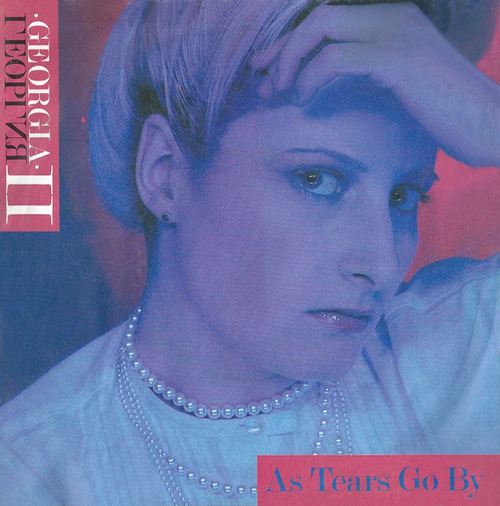
7″/12″ (UK) Georgia II
A: As Tears Go By/ B: Dance Feeling
The A-side was written by the Rolling Stones and first released by Marianne Faithfull in 1964. The Stones themselves recorded the song for their 1965 LP December’s Children. Later it was covered by Nancy Sinatra and others.
The soft pop ballad becomes a real 80s song with Georgia II. It no longer radiates the warmth of the original, but rather resignation. The keyboard escapades in the middle and end parts are jarring, as they are accompanied by a kind of scream solo. If it wasn’t a cover version, one couldn’t deny that it was very original, but since almost all listeners in England must have known the original or the Stones version, you wonder how this version could have excited anyone.
On the B-side there is a Random Hold song that had already appeared as a single B-side and also on the album Burn The Buildings. Dance Feeling is not very different from the other two versions. There are more keyboards and the vocals are a little more to the fore. As a result, neither an improvement nor a deterioration can be discerned.
When the album by Nine Ways To Win was finished, they recorded a video for the pre-release Close To You. This video was actually shown on MTV in the US and recent comments on Youtube suggest that it impressed many young people at the time. Jonathan Hughston certainly cut a good figure in the video and the song was even played in discos afterwards.
July (?) 1983
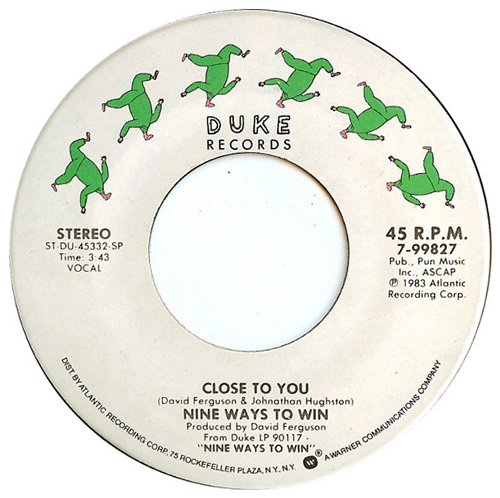
7″ (US) Nine Ways To Win
A: Close To You / B: Waltz
12″ (US) Nine Ways To Win
A: Close To You/ B: Close To You (Remix)
With a danceable synth rhythm and an orchestral, catchy chorus, Close To You is upbeat pop and the relationship with Random Hold is not immediately apparent. On closer listening to the track, the occasional percussive drum attacks and the diverse keyboard sprinkles stand out. It becomes clear that, despite its commercial appeal and modern production, this is not quite an average song, but a very unique pop variation.
Waltz (which was later renamed Windmills) shows a completely different facet of Nine Ways To Win: introduced by a wistful trumpet and romantic guitar picking, this is a reflective song rooted in New Wave and post-punk that could very well have been conceived by an earlier Random Hold version. The only thing that contradicts this impression is the barely audible bass.
On the “maxi version” of Close To Me, the drums are a bit more up front and the (instrumental) intro as well as an instrumental passage in the middle of the song have been extended. Fortunately, no other “gimmicks” were used in the remix.
October 1983
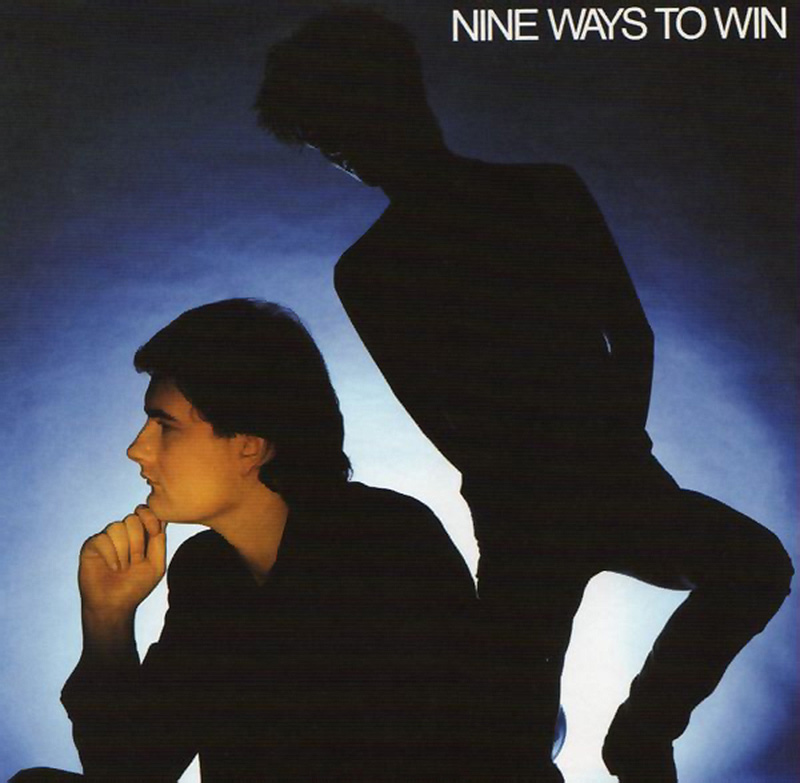
LP (US) Nine Ways To Win
A: Close To You, Painting Over Cracks, Second Cross On The Hill, Ashes And Diamonds, Breaking Bread
B: Lights All Over The World, Waltz, All Sit Down, High-Wire, Time For Keys
The cover of the LP shows only two people this time, Ferguson and Hughston. The credits also make it clear that the “band” consists of these two plus session musicians only. The record has a playing time of about 43 minutes and it is somewhat surprising that David Ferguson was able to write so many songs so quickly. And on this occasion he was very pleased with the recordings he committed to vinyl.
Two of the songs were already known, namely the single release and its B-side (Close To You, Waltz). These are also the only two songs for which Jonathan Hughston is listed as co-songwriter.
The three tracks from the demo recording in the previous winter are also among the total of ten album tracks. Painting Over Cracks has not changed except for better recording quality and updated keyboard sounds. You could the song being played by funkier OMD.
In contrast, All Sit Down has the keyboard rhythm mixed into the background. Instead, the lead figure of the keys has moved more into the centre of the song. The song benefits a lot by complementary percussion and a better mix of the instruments.
The third track of the demo – Second Cross (On The Hill)- is more than a minute longer in the album version. It retains a menacing atmosphere, but is alleviated by friendlier keyboard sprinkles and a vocal that no longer sounds as if it was recorded with a tin can. The drums also get more space and the phrase “The second cross on the hill!”, previously shouted like a marching order, is integrated into the vocals quite normally. A jazzy trumpet can be heard in this song.
Time For Keys is worth mentioning, because, apart from the aforementioned two compositions, this is the only piece where Ferguson is not solely responsible. Martyn Swain co-wrote this song. However, apart from the wild drums in the bridge and a violin solo(!), it is a pretty straight pop song.
The remaining four tracks fit in well. Ashes & Diamonds features more guitar and bass in the mix and also an accompanying saxophone. Breaking Bread was clearly designed for the dancefloor, actually already a Hi-NRG song, and Lights All Over (The World)also seems very disco-compatible despite psychedelic keyboards and wacky saxophone. Highwire is compositionally a bit boring, so the arrangement relies a lot on the saxophone and even features a guitar solo.
In conclusion, Nine Ways To Win is a genuine pop record – any elements of progressive rock that you could find on Etceteraville or The View From Here have been dropped. At the same time, it is not the usual run of the mill pop, but pop with numerous nice arrangement ideas and songs that are often a little bit unusual. From this point of view, it is a very accomplished record.
One week before the release of the LP, Atlantic Records sacked an important person for Nine Ways To Win. Promotion for the album was subsequently half-hearted and no further single was released at first.
According to sources, the band did not play any concerts, which is understandable because all the musicians were from the UK and would have had to fly to the U.S.
1984
The people in power decided to release another single after all, but it was only a promo for DJs. There was no video this time. It was also the last release from Duke Records, which was discontinued in 1984.
Anfang 1984
7″ (US) Nine Ways To Win – A: Painting Over Cracks (Edit) / B: Painting Over Cracks (LP Version)
12″ (US) Nine Ways To Win – A: Painting Over Cracks(Long Version) / B: Painting Over Cracks(LP Version)
Painting Over Cracks certainly works well as a dance floor song. The long version this time resembles the 80s maxi versions known from many bands without becoming unbearable. An additional intro, an instrumental part and a longer final part weren’t really necessary, but don’t harm the overall impression either.
With that, Nine Ways To Win ceased to exist.
According to David Rhodes, he wrote another four songs with David Ferguson in 1984. These remain unreleased (according to Ferguson’s liner notes, there were only three songs). The adventurous musical journey that both Davids had started together almost eight years earlier ended for the time being. It was a journey that explored the entire area from hit parade-pop to avant-garde rock and had produced interesting songs despite a certain obscurity and at least a lack of commercial success.
Jonathan Hughston stopped working as a musician/singer. He passed away in 2017.
Martyn Swain was with The Waterboys in 1984/85. Later he worked as a session musician on various releases and, from the 90s, as composer for television and commercials. In recent years he also attracted attention as a musical composer.
By the time Nine Ways To Win was over, David Ferguson had trained as a theatre teacher but was unable to find a job in this field. When he was offered to contribute music for a small television series by Terry Braun, the director of the Close To You video, he jumped at the chance and gradually made a name for himself as a composer of film music. In this, he often collaborated with David Lord. In 1989 he released a CD of background music (Textures/Landscapes 1).
His next CD release was called The View From Now in September 1998 with excerpts of his film scores, on which David Rhodes (and also Steve Wilkin) plays guitar on some songs.
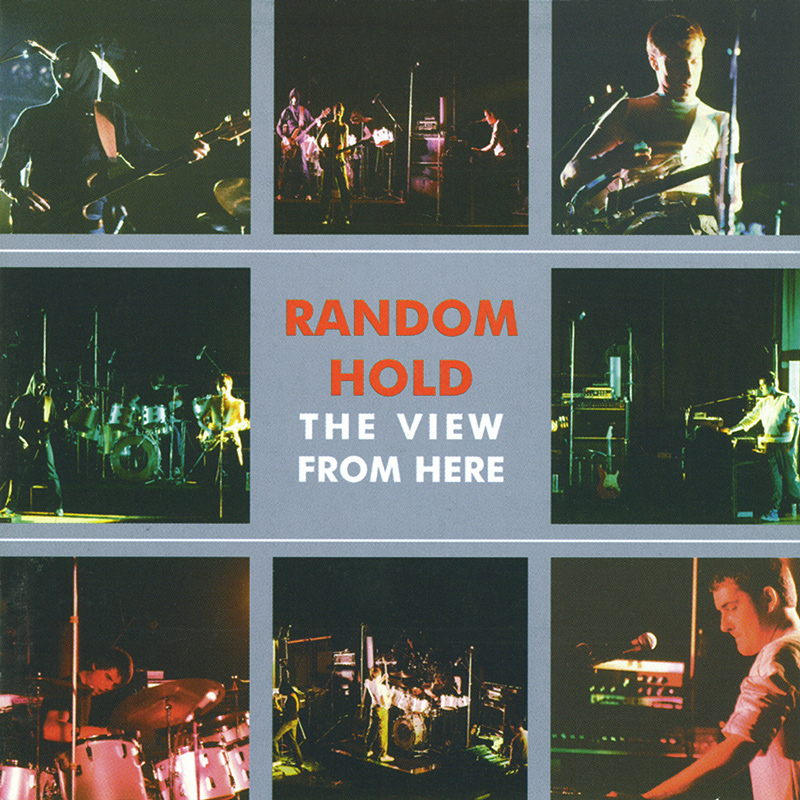
June 2001
2CD (UK) The View From Here
CD1: Meat, Second Nature, The Ballad, Precarious Timbers, Central Reservation, Avalanche, Cause And Effect, Dolphin Logic, Silver Spoons, Fear Eats The Soul, Etceteraville, With People Out Of Love, Film Music, Montgomery Clift / CD2: Tunnel Vision, What Happened, The View From Here, Peter Gabriel Intro (live), What Happened(live), Avalanche (live), Etceteraville (live), Silver Spoons(live), Where Do All The people Live? (live), Today Is As Good As Any Other(live), Passive Camera (live), Montgomery Clift(live), Second Nature(Demo)
CD (UK) Over View
Water, With People, Verona Rolls, Precarious Timbers, The Ballad, Big Star, The Blind, Second Nature, Cause And Effect, Camouflage, All In Your Head, In The Beginning, Wallpaper Song, Today Is As Good As Any Other, The Flag, Passive Camera, Montgomery Clift
Both releases on the Voiceprint label were initiated by Bill MacCormick with an edition of 2000 copies each. Despite this small print run, the CDs are still easy to find on the internet.
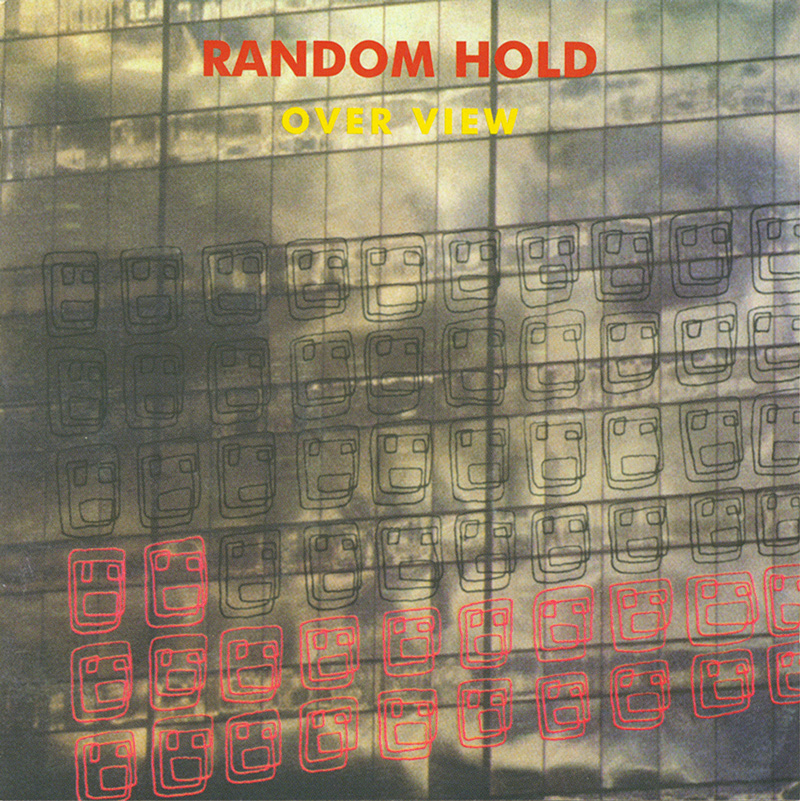
The View From Here is basically the Avalanche 2LP set on CD with half an hour of live material thrown in as a bonus. With this double CD you get all the songs Random Hold released during the time in which David Rhodes was a regular band member.
The individual tracks and also the live bonus have been discussed earlier in the text. The only exception is Second Nature, which has a different version than on the original Etceteraville LP. An extended middle section makes the song about 50 seconds longer (and that doesn’t do it any harm).
Over View is an almost complete collection of the demos recorded in the period before David Rhodes left (the short-term break up of the band). This CD is interesting for people who want to have the comparison with the original version or are interested in the songs that didn’t make it onto a vinyl disc at that time.
The liner notes were written by Bill MacCormick, who previously announced the new releases on the official Random Hold website.
In 2004, David Ferguson was appointed Chairman of the British Academy of Composers & Songwriters. In this capacity he looked after artists’ publishing rights.
September 2009
2CD (UK) Differing Views
CD1: Cityclean, Toys, Walking On The Edge, Dance Feeling, Palmreader, The March, Missing The Boat, Future Kids, Is There Light?, In The Centre, We Can Work It Out, Burn The Buildings, Dancing In The Streets, Lying On The Floor, Shining Smile, Camouflage, Dancing In The Streets (Remix), Painting Over Cracks (Demo), All Sit Down (Demo), Second Cross (Demo) / CD2: Lights All Over, Painting Over Cracks, Windmills, Ashes & Diamonds, Time For Keys, Highwire, Close To You, Second Cross, All Sit Down, Breaking Bread, Painting Over Cracks (Remix), Second Cross (Demo), Tunnel Vision (+Live Video)
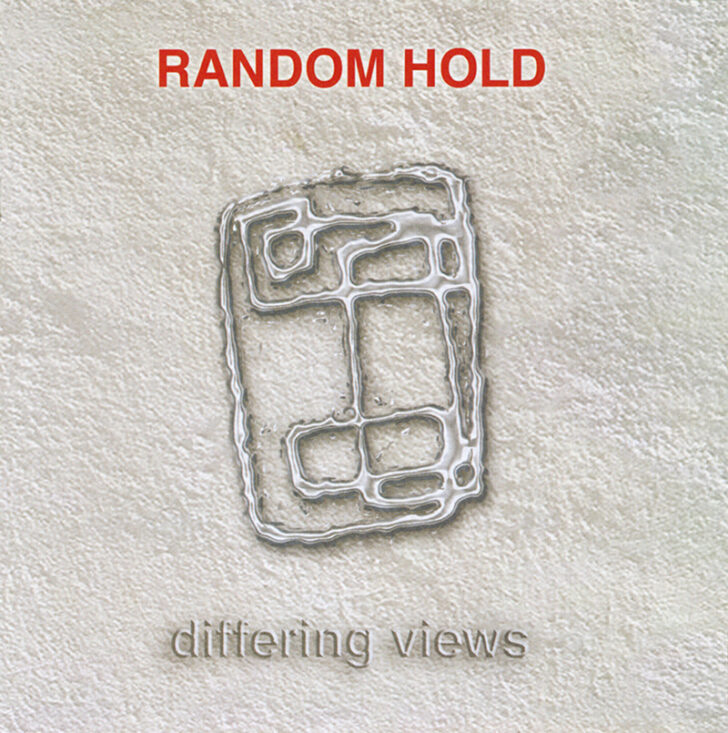
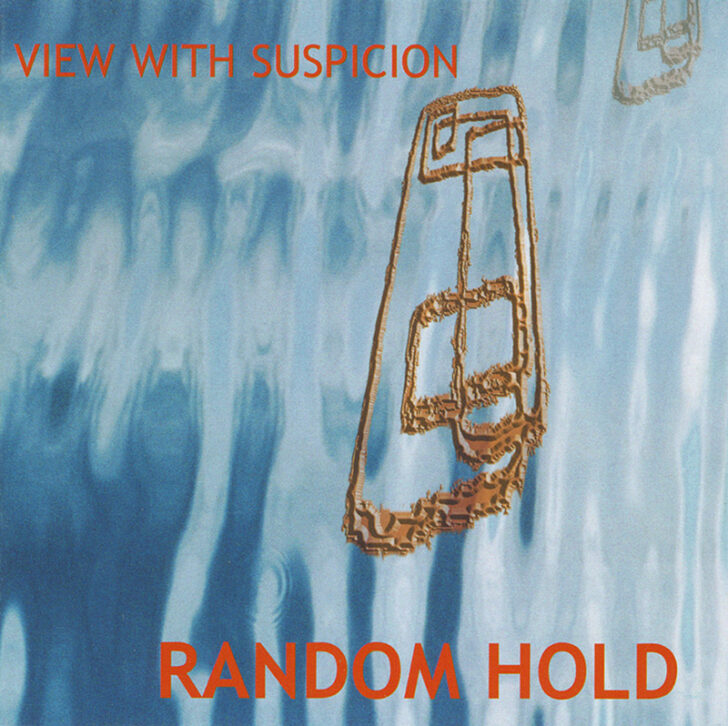
CD (UK) View With Suspicion
Avalanche, Time For Keys, Cityclean, The Ballad, Dance Feeling, The View From Here, Painting Over Cracks, Lying On The Floor, Camouflage, What Happened?, As Tears Go By, Lost In Thin Air
These CDs were released by Voiceprint again, this time under the auspices of David Ferguson, who also contributed the details and liner notes in the booklets.
Differing Views is a feast for the fan of the New Wave pop phase: both the Random Hold LP Burn The Buildings and the self-titled Nine Ways To Win LP are included in their entireties. Plus there are bonus B-sides, single tracks and demos.
Strangely, the song order of the Nine Ways To Win CD differs from the original release. However, this does not diminish the listening pleasure at all. It is also odd that Jonathan Hughston does not receive songwriting credits for the two songs of the first single.
Another plus point of this 2-CD set is the live video on the second CD (some 30 minutes playtime; cf. above).
The only disappointment: The track on the second CD that is listed as The Flag by Georgia II on the cover is merely a repetition of the demo from Second Cross, which is already included on the first CD. This is obviously an error, which means that the Georgia II song is not available digitally. It should also be added that both the remix version of Close To You and the edit of Painting Over Cracks are missing.
View With Suspicion (also called Rear View in the booklet) is conceived as an overview of everything, a “best of”, as it were, and serves this purpose admirably. If you want to check out what the other CDs have to offer, this CD – which can be purchased online at a reasonable price – is exactly the right choice.
In addition, the completist will find three songs not published elsewhere on CD, namely the second (and last) Georgia II single and a new song.
Before the release of View With Suspicion, David Ferguson was in the final stages of completing a completely new Random Hold CD. This featured David Rhodes (as he confirmed in the “it” interview of October 2009), and Martyn Swain on bass. The singer’s position was now held by Rebecca Whale.
Lost In Thin Air was intended as a teaser for this album. In fact, however, it can only compete with the weakest of the older songs. It’s a pop song that is neither danceable nor catchy, but just boring. It is not mentioned whether this version is a demo or already the final version, though it sounds more like a finished version.
The new Random Hold album that never appeared was supposed to be called A View From The Summit – Before The Fallor A View From The Summit – Before The Descent. Besides contributions from the musicians mentioned above, it was also to include musicians who had not previously appeared with Random Hold, among them Ferguson’s son Sam on keyboards and vocals as well as Ged Lynch on drums (Peter Gabriel and David Rhodes’ band).
The fact that this album did not appear may have had to do with David Ferguson’s death on July 5, 2009, before the CD was released.
Nevertheless, one would think that his son, for example, could have finalised the almost finished album for a posthumous release. An article in the British newspaper The Guardian commemorating Ferguson even spoke of him recording an album “with his son”. However, the record company Voiceprint went bankrupt in 2010 and this may well have destroyed any such plans.
2010
CD (US) Nine Ways To Win – Close To You, Painting Over Cracks, Second Cross On The Hill, Ashes And Diamonds, Breaking Bread, Lights All Over The World, Waltz, All Sit Down, High-Wire, Time For Keys
Only one year after the re-release of the Nine Ways To Win album on Voiceprint, the disc was reissued again, this time on the American reissue label Wounded Bird Records and without any bonus tracks. It may have been targeted at people who didn’t know Random Hold and therefore hadn’t noticed the Voiceprint edition (which ran under that band name).
And that was it indeed. Nothing else has been offered by the Random Hold camp since then. You have to assume that there is nothing more left – apart, of course, from an unfinished new album.
On closer inspection, though, there are definitely a couple of songs that ardent fans would be happy about. Ferguson mentioned some of them in the liner notes to Differing Views: the remaining Manscheinen demos, Last Chant For The Slow Dance from Georgia II (written by Academy One), the pieces composed with David Rhodes in 1984 and Separating The Sheep From The Bison, which he had co-written with Martyn Swain. However, he describes all these tunes as “lost” and no trace of them can be found online either. Likewise, there should still be an unreleased Nine Ways To Win demo song. An early Random Hold demo (Central Reservation) can only be heard on YouTube and nothing is known of the demos Rhodes recorded after the end of the first Random Hold version. In addition, some of the released songs are not available in digital formats, such as few. and 12″ versions, the original version of Second Nature, Ferguson’s solo single, The Flag from the first Georgia II single and the studio version of The March. There should be enough material for another archive CD, if someone would take it upon themselves to dig it up and edit it.
Even without these last pieces of the puzzle, Ferguson’s oeuvre permits the willing listener to discover a lot of exciting music – music to which Peter Gabriel’s guitarist David Rhodes made important contributions, both as a composer and on his instrument – especially in the early years and occasionally later.
By Harald Köhncke (December 2019), English by Martin Klinkhardt
Special thanks to David Rhodes, Bill MacCormick, Simon Ainley, George German and Helmut Janisch!
Sources:
Bernhardt, Todd: Interview with Pete Phipps,http://chalkhills.org/articles/XTCFans20131013.html, 2013
Breznikar, Klemen: Interview with Bill MacCormick,https://www.psychedelicbabymag.com/2011/05/bill-maccormick-interview-about-quie.html, 2011
Bright, Spencer: “Peter Gabriel”, 1999
Ferguson, David: Linernotes zu den CDs, 2009
Hammill, Peter: about Random Hold,http://sofasound.com/assocrh.htm
Howitt, Phil: Interview with Bill MacCormick, Facelift Magazine 17, 1997
Janisch, Helmut: Interview with David Rhodes,https://www.genesis-fanclub.de/c-David-Rhodes-Interview-2009-s355.html, 2009
Janisch, Helmut & Zindler, Bernd: Interview with David Rhodes,https://www.genesis-fanclub.de/c-David-Rhodes-Interview-2002-s123.html, 2002
Leroy, Aymeric: Interview with Bill MacCormick:https://www.calyx-canterbury.fr/mus/maccormick_bill.html
MacCormick, Bill: Bandhistory, until 2000 on Phil Manzanera’s website, later (until 2018)on www.randomhold.com; both offline
O’Connor, Mike: Interview with David Rhodes on www.aylesburyfriars.co.uk, 2012
Rhodes, David: FAQ on old website:http://davidrhodes-archive.org/faq.html, 2012
Sound on Sound (Zeitschrift): Interview with David Fergusons, 1998
Wikipedia (Random Hold)
www.discogs.com
www.setlist.fm
Yarwood, Stephen: Interview with Simon Ainley,
http://www.btinternet.com/~stephen.yarwood/ainley.htm; offline
Yarwood, Stephen: Interview with David Rhodes,
http://www.btinternet.com/~stephen.yarwood/rhodes.htm, 1999; offline
Yarwood, Stephen: Interview with David Ferguson,
http://www.btinternet.com/~stephen.yarwood/ferguson.htm, 2000; offline

